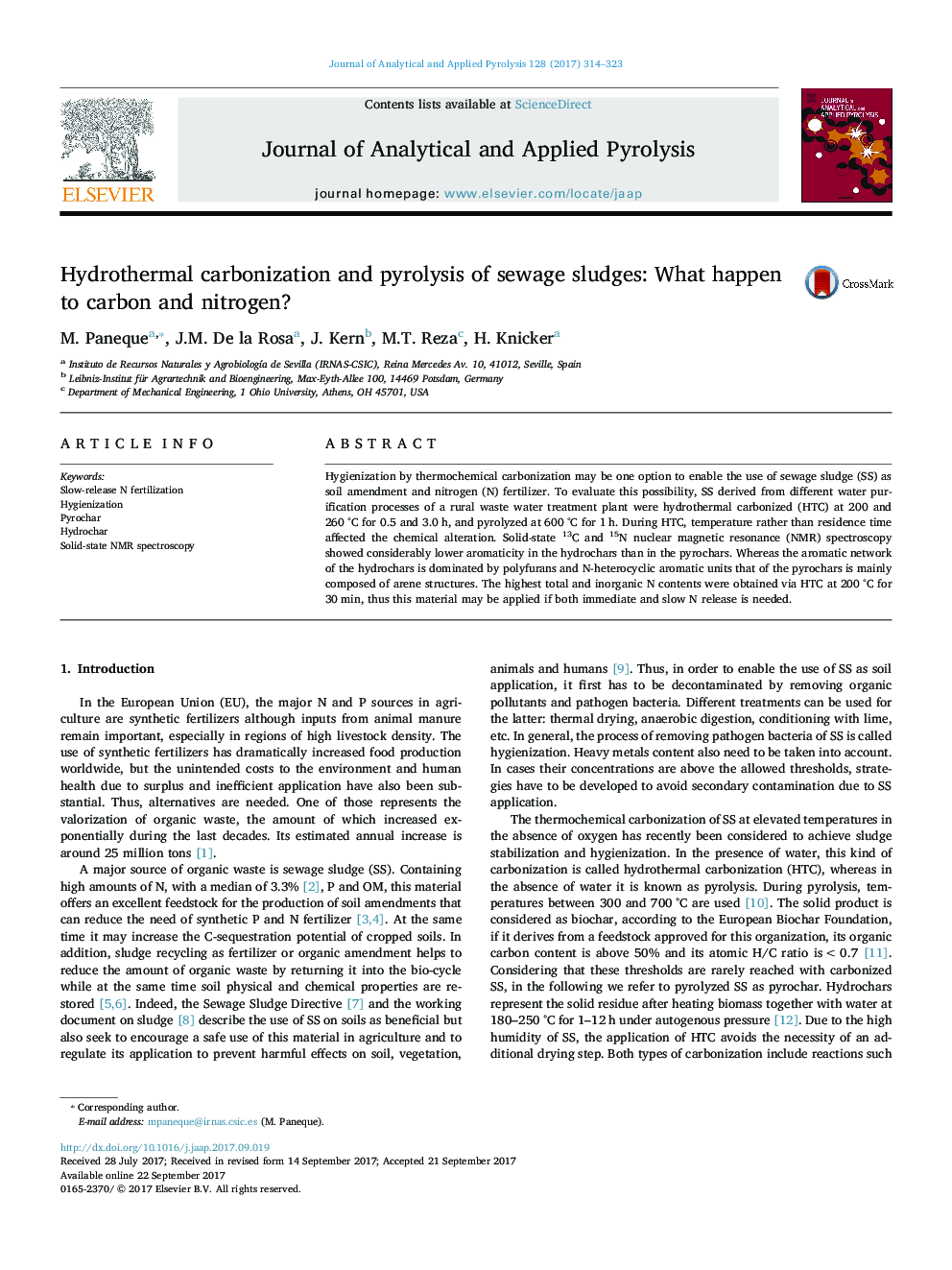| Article ID | Journal | Published Year | Pages | File Type |
|---|---|---|---|---|
| 7606534 | Journal of Analytical and Applied Pyrolysis | 2017 | 10 Pages |
Abstract
Hygienization by thermochemical carbonization may be one option to enable the use of sewage sludge (SS) as soil amendment and nitrogen (N) fertilizer. To evaluate this possibility, SS derived from different water purification processes of a rural waste water treatment plant were hydrothermal carbonized (HTC) at 200 and 260 °C for 0.5 and 3.0 h, and pyrolyzed at 600 °C for 1 h. During HTC, temperature rather than residence time affected the chemical alteration. Solid-state 13C and 15N nuclear magnetic resonance (NMR) spectroscopy showed considerably lower aromaticity in the hydrochars than in the pyrochars. Whereas the aromatic network of the hydrochars is dominated by polyfurans and N-heterocyclic aromatic units that of the pyrochars is mainly composed of arene structures. The highest total and inorganic N contents were obtained via HTC at 200 °C for 30 min, thus this material may be applied if both immediate and slow N release is needed.
Related Topics
Physical Sciences and Engineering
Chemistry
Analytical Chemistry
Authors
M. Paneque, J.M. De la Rosa, J. Kern, M.T. Reza, H. Knicker,
